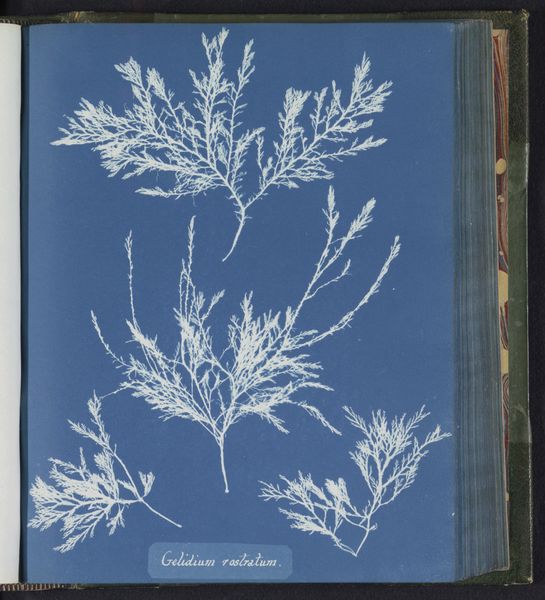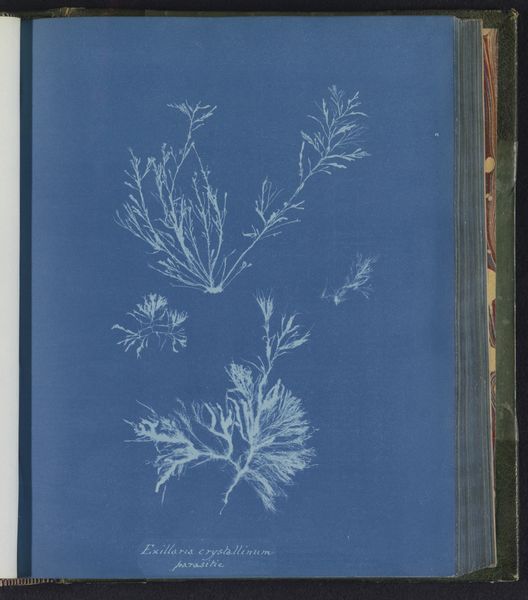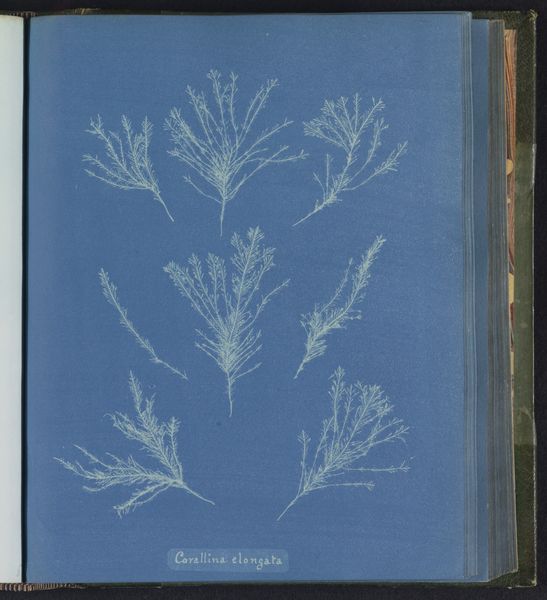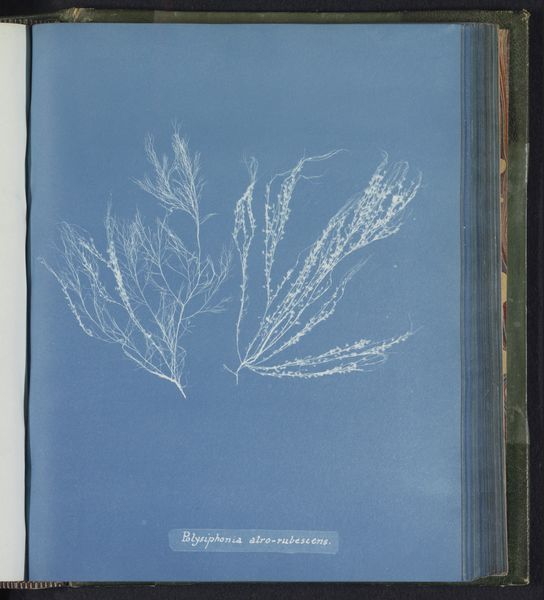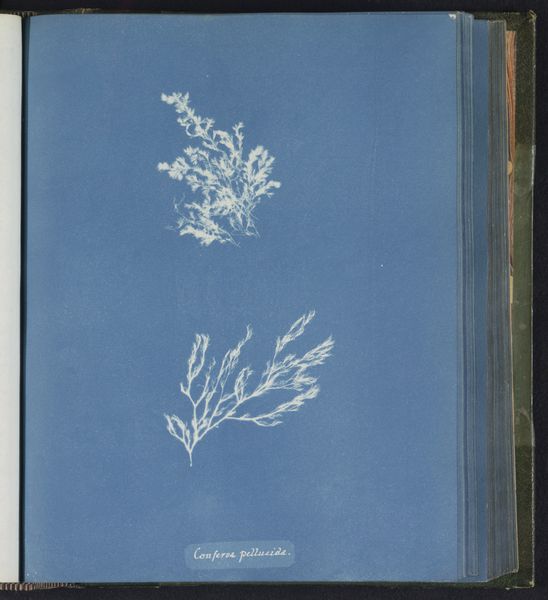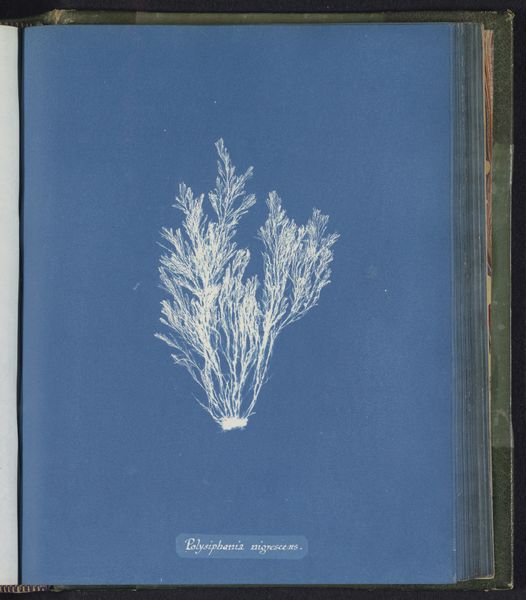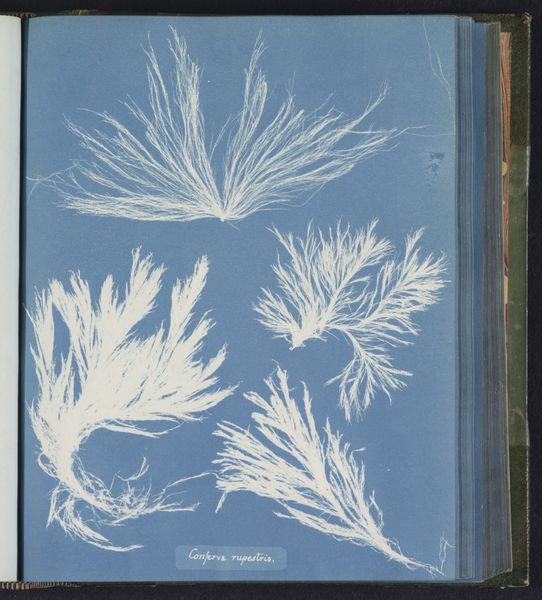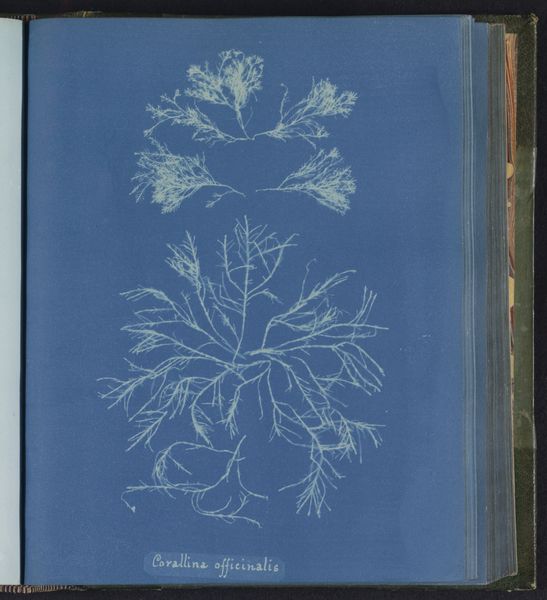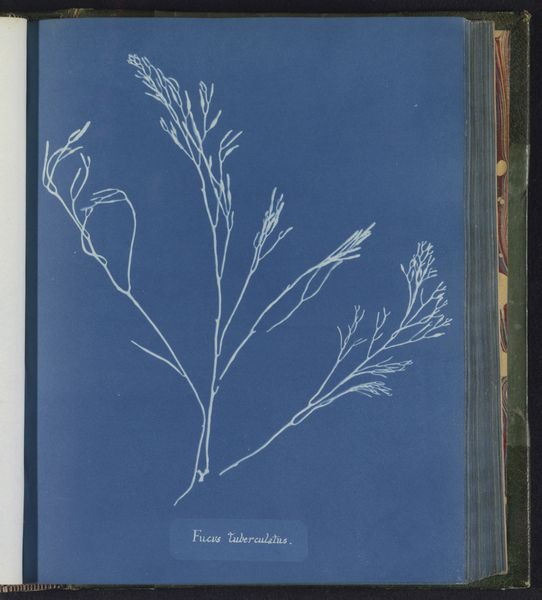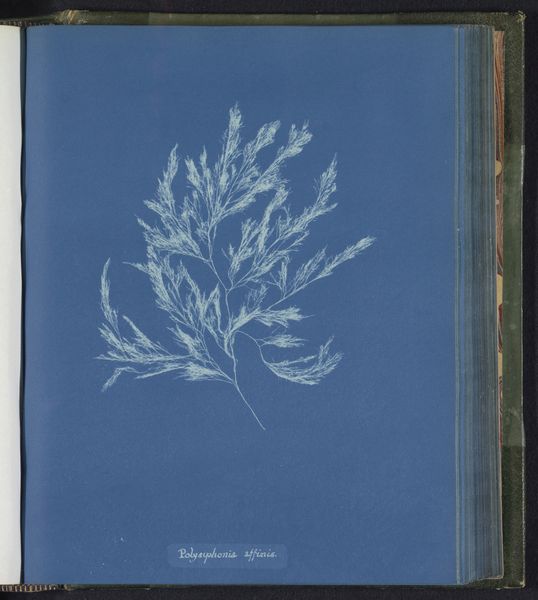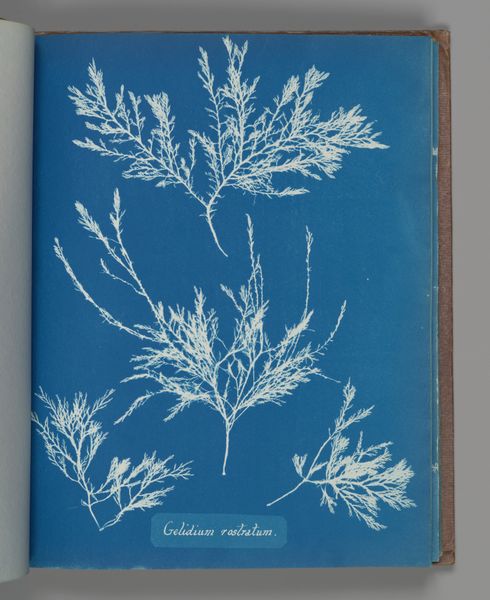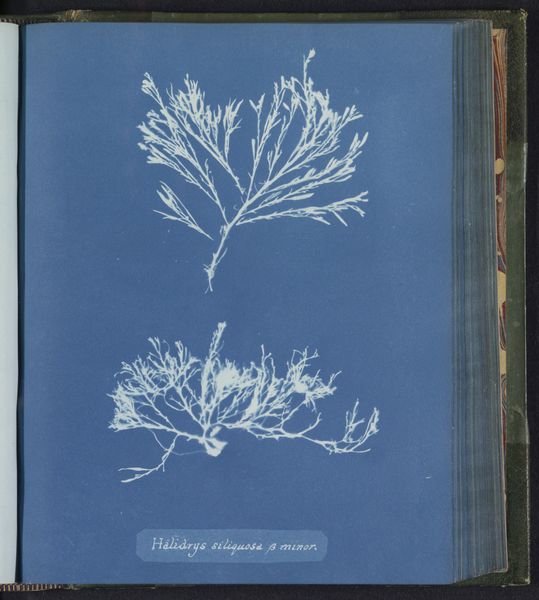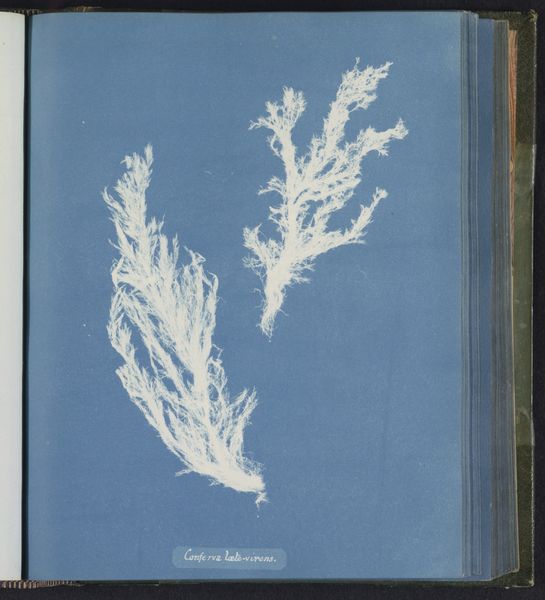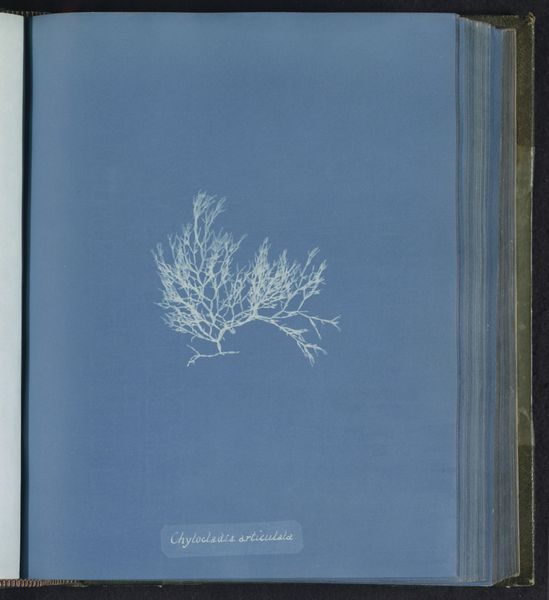
print, cyanotype, photography
# print
#
cyanotype
#
photography
#
realism
Dimensions: height 250 mm, width 200 mm
Copyright: Rijks Museum: Open Domain
Editor: We’re looking at “Polysiphonia elongata,” a cyanotype by Anna Atkins, created sometime between 1843 and 1853. The ghostly white seaweed against that intense blue is striking. It's so simple, almost like a diagram. How would you interpret this work? Curator: Viewing it through a formalist lens, the piece commands attention with its stark contrast and delicate rendering. Consider the balance – the strategic placement of the two specimens creates a harmonious, almost musical, rhythm across the visual plane. Note the negative space. Its very prominence actively shapes our perception. The tonal gradation is equally significant. Editor: I hadn’t considered the negative space as actively shaping the image, that's interesting. Is the colour then, just a consequence of the cyanotype process or more important than that? Curator: Indeed. While the cyanotype process dictated the color palette, the deliberate choices concerning exposure times would have influenced the specific intensity and tonal qualities, the ethereal whiteness against the Prussian blue. One might even argue that the limited tonal range heightens our appreciation of the intricate detail and textural variations within each specimen. Editor: So it's both scientific and aesthetic. I now see how all of these choices regarding composition and color can be read as crucial aesthetic decisions, bringing both an emotional and scientific quality. Curator: Precisely. This work functions on multiple levels.
Comments
No comments
Be the first to comment and join the conversation on the ultimate creative platform.
